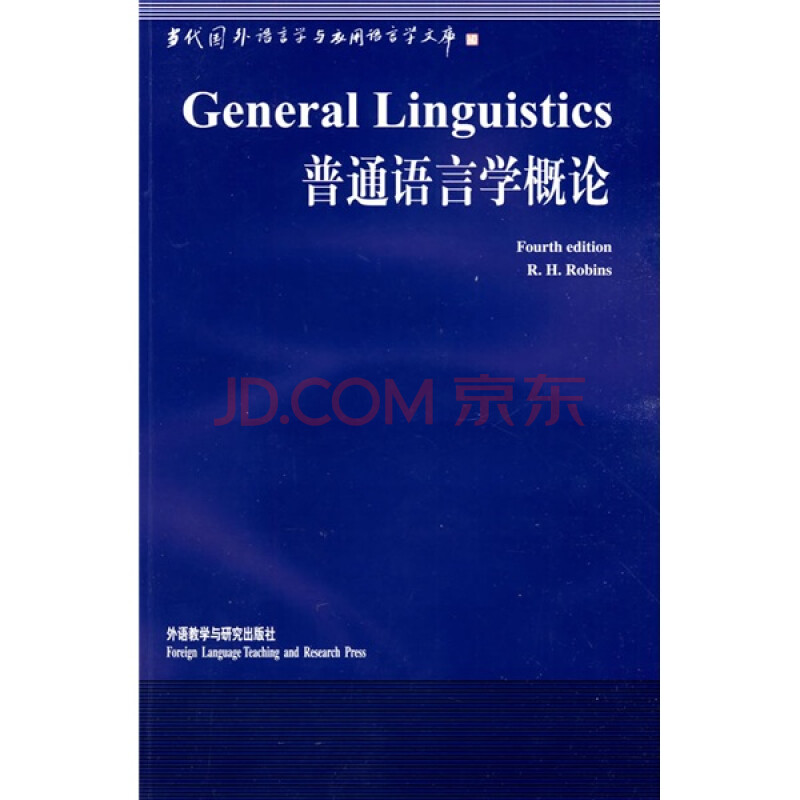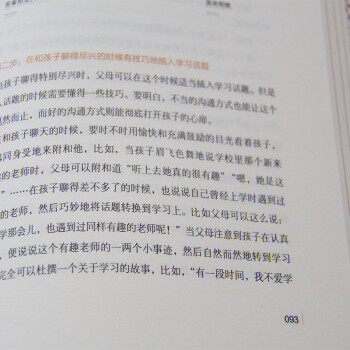热门推荐商品
-
神奇的逻辑思维游戏书 5-13岁提升孩子逻辑思维训练
¥22.50
-
正面管教 修订版 如何不惩罚不娇纵有效管教孩子 育儿百科 最温柔的教养 樊登 早教书
¥19.00
-
一本书读懂中国茶
¥24.90
-
中国国家地理:最好的时光在路上
¥24.90
-
正面管教儿童行为心理学
¥19.00
-
正面管教男孩100招(养育男孩全书)父母的语言话术
¥18.00
-
陪孩子度过7~9岁叛逆期(7-9岁关键养育 叛逆不是孩子的错 男孩女孩自驱型成长)
¥16.30
-
女生呵护指南
¥39.00
-
西尔斯怀孕百科
¥41.50
-
协和医院专家教你吃对不生病:糖尿病吃什么宜忌速查
¥14.90
- 商品名称:普通语言学概论(当代国外语言学与应用语言学文库)
- 商品编号:10033742
内容简介
Linguistics is a wide-ranging discipline. Within its compass lie topics and questions far apart from each other, but all. nonetheless. relevant to our understanding of the nature, structure, use and history of human language. this new. fourth edition of General Linguistics draws these strands together into a comprehensive and accessible introduction to the subject. The book considers; semantics and pragmatics dialect and style phonetics and phonology morphology and syntax, with reference both to traditional and to current theories comparative-historical linguistics and linguistic typology linguistics relation to other disciplines the practical applications of linguistics the 2.500 years of linguistic thought that lies behind what we do and think today .The fourth edition of this respected textbook has been fully revised and updated. It introduces readers to important current and new developments, theories and insights. but always within the context of the basic body of subjects traditionally included in the comprehension of general linguistics. Aided by a thorough bibiography. this book will prove essential reading for all students embarking on linguistics courses at any level.
作者简介
R.H. Robins in Professor emeritus of General Linguistics at the University of London.目录
Preface by Halliday王宗炎序
导读
Preface to first edition
Preface to second edition
Preface to third edition
Preface to fourtb edition
System of reference
Transcriptions and abbreviations
General linguistics: the scope of the subject
1.1 General linguistics as the study of language
1.1.1 Languages and languages
1.1.2 Descriptive, historical, and comparative linguistics
1.1.3 The term philology
1.2 Linguistics as a science
1.2.1 Implications of the term science
1.2.2 Practical applications
1.3 The range of general linguistics
1.3.1 Levels of analysis
1.3.2 Language and communication
1.3.3 Phonetics, phonology, grammar, semantics
1.4 Semantics
1.4.1 Philosophical and linguistic interest in meaning
1.4.2 Word meaning
1.4.3 Sentence meaning
1.4.4 Extralinguistic context
1.4.5 Translation
General bibliography
Bibliography for Chapter Ⅰ
Notes to Chapter Ⅰ
2 Theoretical and methodological considerations
2.1 Abstractions
2.1.1 The status of linguistic abstractions
2.1.2 Structural linguistics: syntagmatic and
paradigmatic relations
2.2 Dialect, idiolect, style
2.2.1 Dialects as subdivisions of languages
2.2.2 Dialect mapping: isoglosses
2.2.3 Class dialects and standard languages
2.2.4 Criteria for determining dialect status
2.2.5 Linguistic tendencies affecting dialectal divisions
2.3 General and particular
2.4 The structural treatment of lexical meaning
2.4.1 Lexical interrelations
2.4.2 Collocation
2.4.3 Semantic field theory
Bibliography for Chapter2
Notes to Chapter2
3 Phonetics
3.1 Articulatory phonetics
3.1.1 The spoken foundation of language
3.1.2 Primacy of articulatory phonetics
3.1.3 The physiological basis of speaking
3.2 The organs of speech
3.2.1 The glottis
3.2.2 The supraglottal organs of speech
3.2.3 Nasalization
3.3 Segmentation: vowel and consonant
3.3.1 Segmentation
3.3.2 Vowels and consonants: transcription
3.3.3 Vowels
3.3.4 Consonants
3.4 Acoustic phonetics
3.5 Piurisegmental features
3.5.1 The continuum of articulation
3.5.2 Glottal and supraglottal features
3.5.3 Stress
3.5.4 Pitch
3.5.5 Voice quality
3.6 Phonetics in linguistics
Bibliography for Chapter3
Notes to Chapter3
4 Phonology
4.1 Speech and writing
4.2 Narrow and broad transcription: phonetics and
phonology
4.3 The phoneme theory
4.3.1 The phonemic principle, phonemics
4.3.2 Segmental phonemes
4.3.3 Phonemic analysis of length and stress
4.3.4 The syllable
4.3.5 Tone phonemes
4.3.6 Intonation
4.3.7 Distinctive features
4.4 Further developments
4.4.1 Classical phoneme theory
4.4.2 Juncture phonemes
4.4.3 Prosodic phonology
4.4.4 Generative phonology
4.4.5 Natural generative phonology
4.4.6 Rule ordering
4.4.7 Autosegmental and metrical phonology
Bibliography for Chapter4
Notes to Chapter4
5 Grammar: grammatical elements
5.1 Preliminary questions
5.1.1 Uses of the term grammar
5.1.2 Formal grammar
5.1.3 The basic units of grammar
5.2 The sentence
5.3 The word
5.3.1 Grammatical criteria of word status
5.3.2 Phonological markers of the word unit
5.3.3 Variant word forms
5.4 The morpheme
5.4.1 The morpheme as the minimal grammatical unit
5.4.2 Morpheme variants (allomorphs)
5.4.3 Bound and free morphemes: root and affix
5.5 The semantic status of morphemes
Bibliography for Chapters5 and6
Notes to Chapter5
6 Grammar: grammatical classes, structures, and categories
6.1 Syntactic relations
6.2 Word classes
6.3 Immediate constituents
6.3.1 General principles: basic syntactic structures
6.3.2 Endocentric and exocentric: subordinate and coordinate
6.3.3 Word order and syntactic structure
6.3.4 Cross-cutting of immediate constituents and word boundaries
6.3.5 Comparison with traditional practice
6.4 Grammatical categories
6.4.1 Number, gender, case
6.4.2 Concord and government
6.4.3 Subject and object
6.4.4 Morphology in relation to syntax
6.4.5 Inflection and derivation
6.4.6 Grammatical functions of stress and pitch features
6.4.7 Morpheme and category
6.5 Subclasses, irregularities, and economy
6.6 Grammatical semantics
6.6.1 Semantic correlations
6.6.2 Meanings of grammatical categories
6.6.3 Class meanings and structural meanings
6.6.4 Methodological implications
Notes to Chapter6
7 Current linguistic theory
7.1 Theory formation
7.1.1 Linguistic theory and linguistic practice
7.1.2 Rival theories
7.2 Transformational-generative linguistics (TG)
7.2.1 General considerations
7.2.2 Early formulation: Syntactic structures
7.2.3 Later developments: Aspects of the theory of syntax and after
7.2.4 Government and binding
7.3 Other current theories
7.3.1 General context
7.3.2 Generalized phrase structure grammar(GPSG)
7.3.3 Relational and functional grammar
7.3.4 Dependency grammars
7.4 Earlier post-structuralist theories
7.4.1 General context
7.4.2 Tagmemics
7.4.3 M.A.K. Halliday: systemic grammar
7.4.4 Stratificational linguistics
7.5 Postscript
Bibliography for Chapter7
Notes to Chapter7
8 Linguistic comparison
8.1 Historically orientated comparison of languages (comparative and historical linguistics)
8.1.1 The material
8.1.2 The Great Vowel Shift in English
8.1.3 Semantic changes
8.1.4 The Indo-European family
8.1.5 Other language families
8.1.6 The representation of correspondences
8.1.7 The neogrammarian thesis
8.1.8 Loan words
8.1.9 Analogy
8.1.10 Sound change and generative grammar
8.1.11 Historical inferences
8.2 Typological comparison
8.2.1 General principles
8.2.2 Phonetic typology
8.2.3 Phonological typology
8.2.4 Grammatical typology
8.2.5 Linguistic typology and linguistic universals
8.2.6 Structural typology
8.2.7 Lexical typology
8.2.8 Historical change and linguistic typology
8.2.9 Summary
Bibliography for Chapter8
Notes to Chapter8
9 Wider perspectives
9.1 Linguistics, anthropology and sociology
9.1.1 Linguistics and anthropology
9.1.2 Linguistics and sociology: sociolinguistics
9.2 Linguistics and philosophy
9.3 Linguistics and psychology
9.4 Linguistics and language teaching: linguistics and communications engineering
9.4.1 Linguistics and language teaching
9.4.2 Linguistics and communications engineering
9.5 Linguistics and literature
9.6 Outline of the history of linguistic studies in Western Europe
Bibliography for Chapter9
Notes to Chapter9
Index
精彩书摘
1.1.1 Language and languagesGeneral linguistics may be defined as the science of language. As with other branches of knowledge and scientific study, such a definition involves the subject in certain relations with other disciplines and sciences outside itself, and in subdivision into different branches of the subject comprised within it. At the outset something must be said under both these headings, but it should be made clear that in these, as in several other important topics which must be examined even in an introductory account, the opinions of scholars differ in considerable respects.
It must be realized that a subject like general linguistics, in common with most other subjects of systematic study, is not static. Viewpoints, including some of quite fundamental import- ance, may change or receive different degrees of emphasis in the course of years. No book can honestly pretend to deal with the subject in a way that will both be accepted in all respects by every recognized scholar in the field and remain unaltered for all time. In this book, some account is taken of major unresolved contro- versies, and the reader must be prepared for others to arise.
In the first place it is desirable to consider the difference between general linguistics as the science or scientific study of language and the study of individual languages. This latter study is, indeed, more familiar to the majority of people, and has played a major part in all stages of education in many parts of the world for some time; the study of linguistics, on the other hand, is, at least in its present form, a relative newcomer in the field of scholarship.


















 沪公网安备 31010402003631号
沪公网安备 31010402003631号